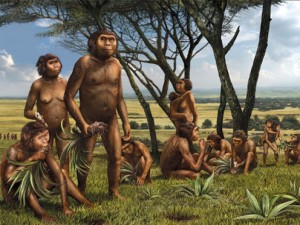Great resource pages from Physclips, covers pretty much everything you need to know about AC circuits…
AC Circuits
Friday, August 26th, 2011 | KEV KNOWLES | No Comments
Te Kohanga Pūtaiao
Friday, August 26th, 2011 | KEV KNOWLES | No Comments
Great resource pages from Physclips, covers pretty much everything you need to know about AC circuits…
Friday, August 26th, 2011 | KEV KNOWLES | No Comments
From the “Einstein Year” website.
Good linking material for all you need to know about the photoelectric effect. Remember, this is what Einstein got his Nobel Prize for, NOT for relativity…
Thursday, August 18th, 2011 | STEPHEN BRONI | No Comments
 The archaeology of human evolution in depth.
The archaeology of human evolution in depth.
Fresh voices in the field speak out on relevant topics.
Extensive reference guide and extremely thorough glossary.
http://www.archaeologyinfo.com/
Thursday, August 18th, 2011 | STEPHEN BRONI | No Comments
Statistics may be defined as “a body of methods for making wise decisions in the face of uncertainty.” W.A. Wallis
How confident are you with Statistical theory and practice?
Would you like to use state of the art analytical software on real problems to hone your skills?
Otago University has made a series of video clips of researchers talking about using statistics in their research. The clips include examples from zoology, nutrition, psychology, chemistry, physiology within the university and DoC and AgResearch Ruakua outside the University.
But wait there’s more….!!!!!
The videos come with matching data sets and a powerful, free-to-use menu-driven schools version of the statistical package GenStat .
A FREE school version of this software has been developed for New Zealand Schools. You can even access the software freely at home once your school is registered.
The video clips and data sets come with lessons using `GenStat Schools’ and all of the resources are available from the department’s website www.maths.otago.ac.nz/videos/statistics
A school can apply for a FREE GenStat Schools Licence at www.vsni.co.uk/software/genstat-teaching
If you haven’t heard of GenStat take this to your Maths Teacher right away and start making use of this great resource.
Tuesday, August 16th, 2011 | hamvi58p | No Comments
http://www.teachersdomain.org/resource/tdc02.sci.life.evo.lacewings/
Check out the section called ‘Background Essay’….. brilliant for your revision, here is a sneak peak.
‘When explaining a breakup, couples will often say, “We grew apart,” or “We both changed in different ways.” That’s a good metaphor for how species are formed: members of a population somehow begin to diverge, usually as a result of being geographically separated from each other. Eventually, they can no longer interbreed, and at that point a new species has formed.
Yet if the two groups continued to live near each other, it’s likely that mating attempts between naturally varying members of the two populations would tend to allow the species to merge again. This is called “gene flow” between the two groups. What keeps this from happening, and what allows new species to arise and endure, are what are known as “isolating mechanisms.” These are either behavioral or structural differences between species that make mating impossible……’ see website for remainder of article.
Discussion Questions:
Tuesday, August 16th, 2011 | hamvi58p | No Comments
The Origin of Species
This is a great website for those wanting to apply themselves to what has been taught in the classroom. The extract below is the background reading, there are applictaion questions as well as the interactive slide show. A must for serious Biologists and Excellence/Schol. candidates!
http://www.teachersdomain.org/resource/tdc02.sci.life.evo.anorigin/
The term evolution refers to the cumulative change that occurs in populations of organisms over time. Sometimes evolutionary change is so dramatic that different populations of the same species diverge to become two or more distinct species. In the case of a group of birds called honeycreepers, for example, a single species that colonized the Hawaiʻian Islands about 5 million years ago ultimately diverged into 57 different species.
This process, which evolutionary biologists call speciation or adaptive radiation, can happen anywhere. However, it is most clearly demonstrated on geologically young land masses, such as newly formed islands or mountains. In these environments a population of organisms will typically find a set of environmental opportunities and pressures very different from the conditions they experienced in their place of origin. These environmental differences come in many forms and often cause sweeping evolutionary changes in a founding population.
Several environmental factors affect the process of speciation. The structural habitat of an area determines the ease with which creatures are able to move around and find shelter from weather and other organisms. Food, both the type and its availability, dictates the ease with which animals are able to acquire the energy they need to survive and reproduce.
Competition for various resources is another factor that can drive the process of speciation. Competitive pressure can come from organisms of the same species or from organisms of different species. Generally, in highly competitive environments, traits that minimize competition — traits that, for example, allow two different populations to feed on very different types of food — are advantageous.
Another factor that can influence speciation is predation. Predators typically reduce the rate of speciation because they limit other organisms’ access to resources. On newly formed land masses, however, the number of predators is typically lower than on older continents. These younger environments, therefore, provide more opportunities for species to evolve into new and different species
Sunday, August 7th, 2011 | STEPHEN BRONI | No Comments
Recent Comments